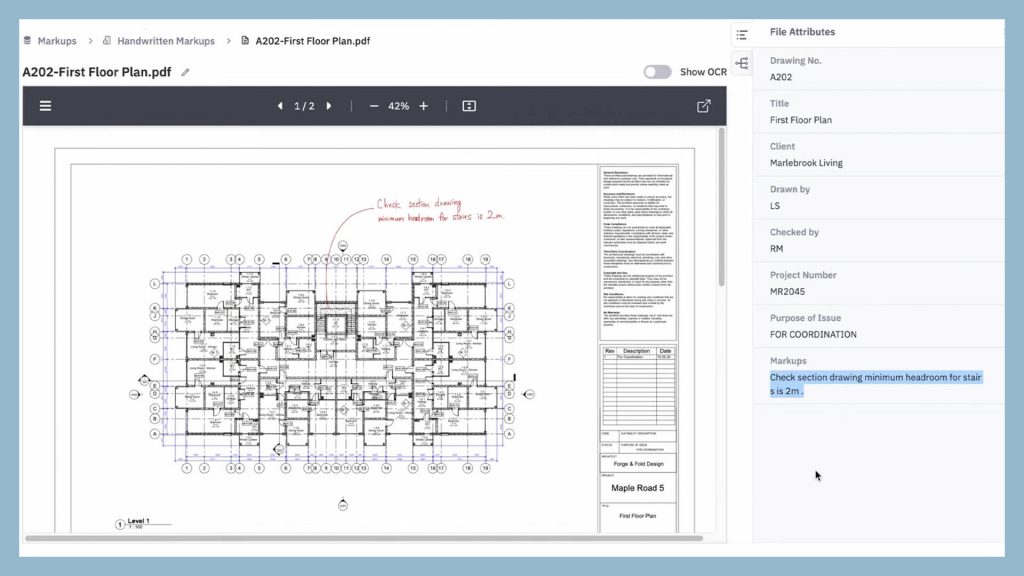Tektome KnowledgeBuilder designed to turn know-how from past projects into “design Intelligence”
Tektome has unveiled KnowledgeBuilder, an AI-powered platform designed to automatically organise massive volumes of siloed project documents to help AEC teams make smarter decisions while avoiding repeated mistakes.
The software, already piloted by Takenaka Corporation, one of Japan’s largest construction firms, analyses and extracts key content from scattered files — including drawings, reports, photos, and handwritten notes on marked up PDFs — and consolidates the data into a central, structured, and “instantly searchable” knowledge base.
The platform enables architects and engineers to ask questions in plain language and quickly see how similar issues were handled in past projects, eliminating the need to “reinvent the wheel.”
According to the company, even non-IT staff can configure what to pull from drawings, proposals, photos or meeting minutes without coding or complex setup.
KnowledgeBuilder works across PDFs, CAD files (DWG and DXF), scanned images, handwritten markups, and more, with support for BIM files (RVT and IFC) coming soon.
Its search functionality includes two modes: combined filtering across project attributes, file-level attributes, and keywords for precise narrowing, and a semantic keyword search that understands context and synonyms, and highlights matches inside documents and drawings.
According to Tektome, this natural query ability helps teams retrieve critical insights on demand, greatly improving decision-making speed and confidence.
For its KnowledgeBuilder implementation, Takenaka Corporation established multiple working groups. On-site team members took the lead in verifying how as-built drawing data could be structured and after a three-month pilot programme, were able to set up their own custom extraction criteria tailored to their needs. This allowed them to quickly retrieve practical information such as past as-built drawings that matched specific project requirements, reference examples from similar projects, and summaries of relevant numerical data from previous designs.
Takenaka is now expanding the system by importing a larger volume of past as-built drawings and further enhancing search options and usability.
“The shift from manually searching hundreds of thousands of pages of drawings to instant access through natural language has revived veteran design expertise as actionable knowledge, allowing designers to focus on more creative tasks,” said Mr. Takaoka of the Structural Department, Design Division at Takenaka’s Tokyo headquarters.








